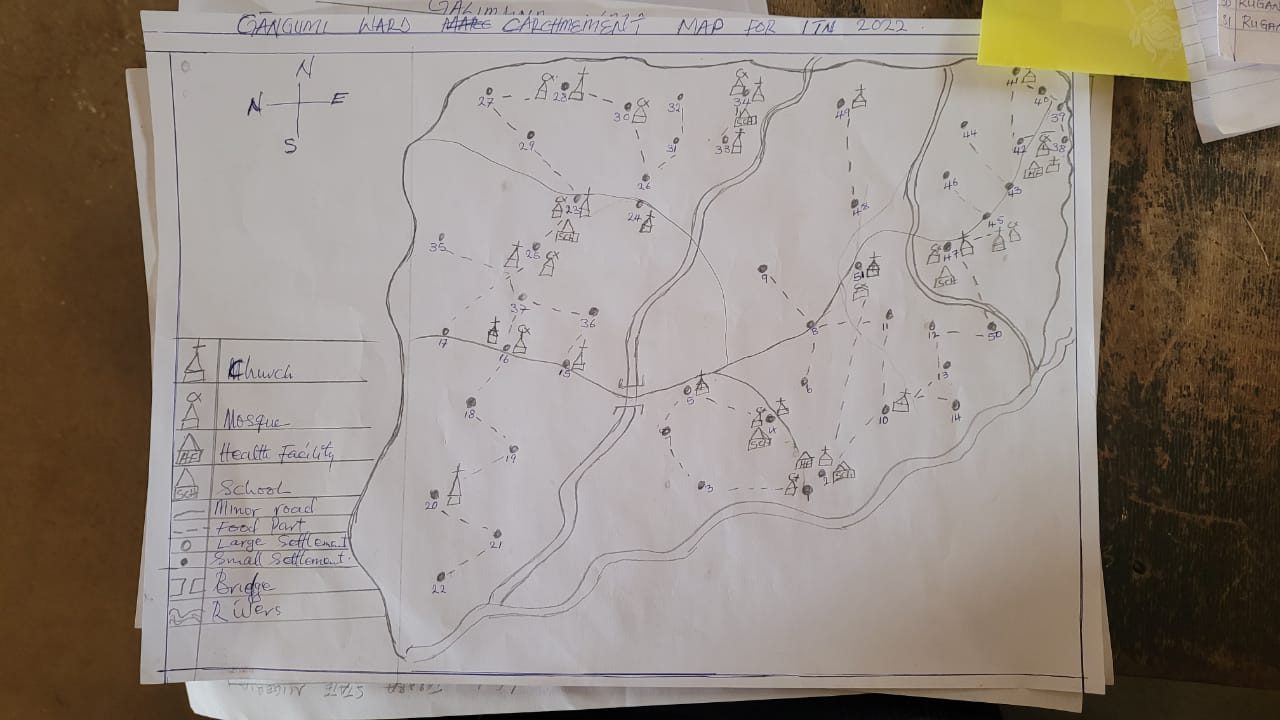Campaign aimed at controlling malaria in Kano State, Nigeria, gets a boost with GRID3 maps
To support the National Malaria Elimination Programme (NMEP) with digital microplanning for an upcoming October 2022 Insecticide-Treated Net (ITN) distribution campaign in Kano State, GRID3 has produced 484 ward-level microplanning maps. The aim is to stem the spread of malaria using data-driven decision making.
According to Nigeria’s National Malaria Elimination Programme (NMEP), 97 percent of the country’s population is at risk of malaria. Insecticide-Treated Net (ITN) distribution campaigns help reduce the prevalence of malaria through the “community effect” that occurs when the majority of residents in high transmission areas sleep under chemically treated bednets.
Previous ITN distribution campaigns led by NMEP, including the last one conducted in Kano in 2019, relied on residents walking to distribution hubs to register their households and collect treated nets allocated to them. Microplanning for those campaigns involved health officials using their knowledge of their assigned communities to draw maps of the areas. Information from these maps were then collected by state officials to populate microplans for the campaigns. Fatima Bukar Ali, the focal person for ITN campaigns at NMEP, notes this process was tedious: “it required several levels of review and, even then, our microplans sometimes missed some settlements.”
An example of a map drawn by hand for the ITN distribution campaign
In addition to issues related to microplanning, the need to mitigate the spread of COVID-19 increased the complexities of implementing this year’s ITN distribution campaigns. To address this, the NMEP — working with a consortium of partners including the Alliance for Malaria Prevention, Society for Family Health, Catholic Relief Services, International Federation of Red Cross and Red Crescent, and GRID3 — devised a new door-to-door campaign strategy.
During the campaign implementation in October, health officials will now go to every household to deliver ITNs. Understanding the distribution of target populations as well as the difficulties of accessing settlements and health facilities is important to ensure the successful implementation of the new strategy and that no settlements are overlooked during microplanning.
To this end, the NMEP requested GRID3 to design 484 ward-level maps for the upcoming ITN distribution campaign in Kano State. Kano is one of the first states in Nigeria where NMEP will pilot its new strategy.
After deliberations with the NMEP on which datasets to include in the maps in April 2022, GRID3 began preparing the ward-level maps using GRID3 data on population, boundaries, and settlements. The maps produced show population per health catchment area, estimated number of households to be covered within each health catchment area, the estimated number of ITNs needed for the campaign per catchment area, and the estimated number of distribution hubs to be located within each health catchment area. These data points ensure that the necessary number of resources (health workers, bednets, and distribution hubs) are allocated.
GRID3 designed 484 ward level maps for the ITN distribution campaign. Map in view: Bichi local government, Kano state.
Fatima Bukar AliUsing the GRID3 maps, we were able to access accurate and up-to-date data about the settlements and populations. At the local level, the maps eliminated the need for ward health officials to hand draw maps for microplanning, thereby reducing errors in our microplans. Then, at the national level, the data in the maps will make it possible for us to allocate appropriate resources to each settlement and also monitor the distribution hubs during the campaign in October. Finally, I believe that these maps will serve as a good foundation for planning subsequent health campaigns in Kano state.
Focal Person, ITN campaigns, NMEP
GRID3 maps can help health officials make adequate plans to provide appropriate number of ITNs needed to reach target populations
Each map provides estimates of population, household, ITN, and distribution hubs by Health Facility Catchment Area, Ward and Local Government Area
Once the maps had been reviewed by the NMEP, GRID3 led a digital microplanning training of trainers event in May. The event was designed to strengthen the capacity of NMEP officials at the national level to facilitate trainings for local health officials on how to use the maps. GRID3 also supported NMEP officials to train local government, and state level health officials in Kano State during the same month.
The ITN distribution campaign will be held in the 44 local government areas of Kano in October 2022.




